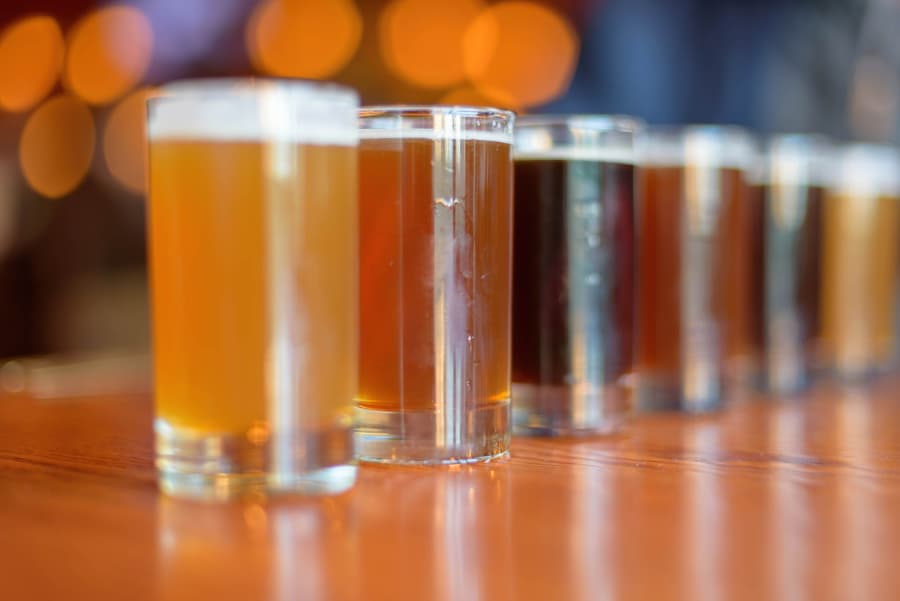
The IBU scale makes categorizing the bitterness level in beer simpler. This system is extremely helpful when figuring out which type of beer is most appealing to a person’s palate. IBU stands for international bittering unit and is often found on craft beer labels and descriptions. Here, Columbia Distributing, a beverage distributor in Washington and Oregon, guides you through understanding the IBU of your beer.
The Details: What Is IBU in Beer?
The technical meaning of IBU speaks to the chemical measurement of bittering compounds in the beverage. For instance, chemicals such as isomerized and oxidized alpha acids and polyphenols determine the bitterness of your beer. The IBU scale features a wide range, with five being the lowest and 120 being the highest. The following are some important aspects to think about with IBU in beer:
Measurements Are Sometimes Complicated
Just because a beer has a higher IBU doesn’t mean it will taste as bitter as something with a lower IBU. This is because the IBU strictly measures the amount of the chemicals in a beer that makes it taste bitter – not the flavor itself.
Measurements Serve as a Quality Control Tool
Quality control is a huge part of brewing alcoholic beverages. Since many breweries make large quantities of the same beer, IBU helps them ensure the beer tastes the same every time.
Although not always the case, a higher IBU translates into a more bitter beer, and the lower the IBU, the less bitter it is.
A Breakdown of Different Types of Beer and Their IBU
As the IBU level of a beer increases, the iso-alpha acids and polyphenols in the beer register as more bitter on the tongue. For example, lower IBUs feature a natural acidity that balances against the malt sweetness to create a subtly bitter taste. Alternatively, IBUs on the higher scale tend to be intensely flavored and have a malty sweetness balanced against a heavy bitterness. The middle-range IBU levels are often less malty and slightly bitter since they have less of a counterbalance.
Some examples of the different beers and their IBU levels include:
- Sours: Sour beers tend to be on the lower end of the IBU scale, usually ranging from five to 10. Some may range a bit higher, but most sours are fairly low on the scale.
- Lagers: American lagers often range from five to 15 IBU because they are lighter-bodied and crisp, relying only on enough bitterness to balance the malt flavors.
- Ales: Wheat ales typically incorporate fruit or yeasts that impart a fruity aroma and flavor profile, resulting in relatively low IBU numbers in the range of 10 to 35.
- Pale ales: Not as malty or heavy-bodied as IPAs, pale ales typically range from 30 to 50 and may taste more bitter since there is less to counterbalance the bitterness.
- Stouts: The wide variety of stouts means they range quite drastically in IBU values. However, most are on the medium to low side of the IBU scale, ranging from 25 to 40.
- Imperial stouts: With bolder flavor profiles, imperial stouts may be in the 50 to 80 range, challenging and even surpassing some IPAs.
- IPAs: Similarly to stouts, IPAs have a wide range and each type differs. These beers have bright, fruity, and floral notes and aromas and often lie between 50 and 80 on the IBU scale.
Although flavor can be subjective to the IBU number in a beer, the measurement does provide a better understanding of some common types of beer. Additionally, while different brands of beers may range in IBU, you’ll most often find that these specific types of beer closely align to the above levels.
Discover More About Beer with Columbia Distributing
Many different factors and ingredients make up a good beer, and the IBU measurement is just one part of the equation. Columbia Distributing can help you pick out the perfect beer to suit your tastes. Contact us today to learn more about our beer selection plus the other alcoholic and non-alcoholic beverages we carry in Wilsonville, Oregon, and Kent, Washington.